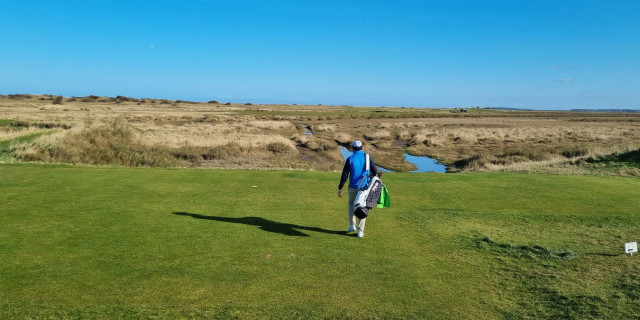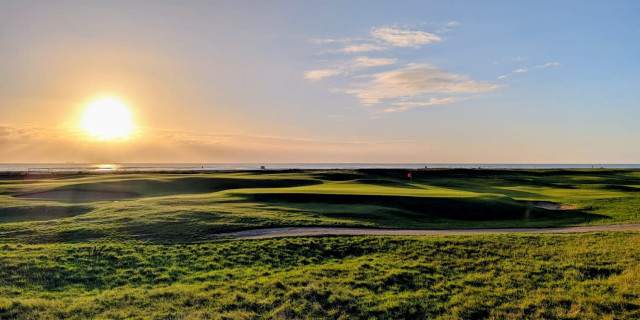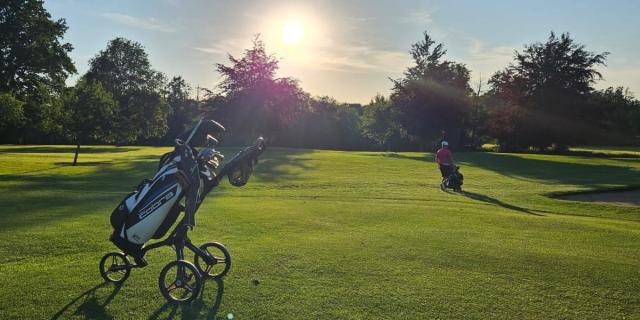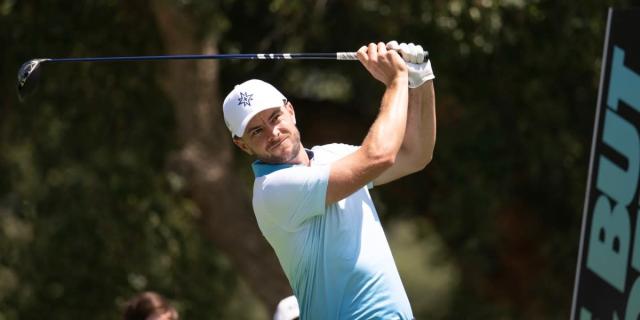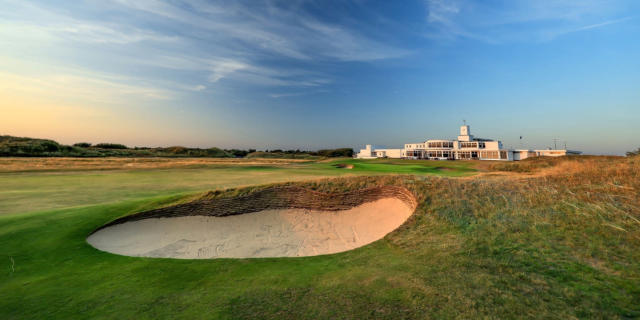
The Most Shocking Collapses in Golf History
Until the day he hangs up his golf clubs for good, Sweden’s Sebastian Soderberg will never forget the final round of the Scandinavian Mixed. He started it with an eight-shot lead. He ended it by missing a tiddler which meant that he lost the tournament to Linn Grant. She shot a 65, he staggered in with a 77.
Time alone will tell if this turns out to be a terminal blow to his career.
It got us thinking about some of golf’s biggest collapses - and there are plenty to choose from.
Martin Kaymer, 2015 Abu Dhabi Championship
Kaymer was the reigning US Open champion when he played in the 2015 Abu Dhabi Championship. With scores of 64, 67, and 65, he held a six-shot lead after three rounds. And after five holes of the final round he had extended that to 10 shots. The German then found trouble in the bunkers, resulting in a round of 75 and a fall to third place behind Frenchman Gary Stal, who secured his first European Tour victory, and Rory McIlroy. Speaking after the round, Kaymer told the media that he was "in shock" at the result: "I'm surprised and shocked," the German said. "I don't really know how to put it into words. It was very, very surprising today. It will take me a few days to reflect on this. I don't think I played that badly. I started well and just hit two drives which led to two bad holes.” He has not won anything since.
Adam Scott, 2012 Open
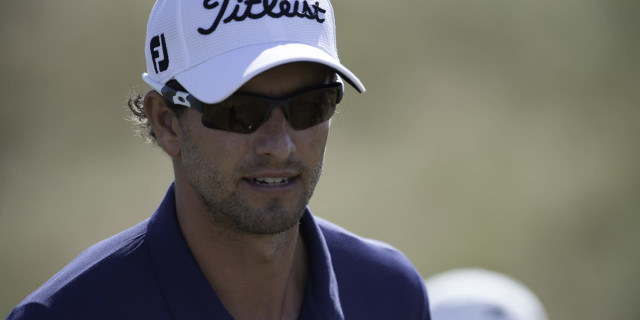
(Image Credit: Kevin Diss Photography)
Scott began the final round of the 2012 Open with a four-stroke lead. As he stood on the 15th tee, he was five ahead of Ernie Els, who birdied the 16th to reduce the gap to four. Scott bogeyed the last four holes, while Els rallied, including a birdie on the last, to win by one. At the 15th, Scott's approach shot found a bunker; on the 16th, he missed a three-foot par putt; on the 17th, his approach was long and found thick rough behind the green; on the 18th, his drive rolled into a pot bunker. Scott played out sideways from that bunker, then hit his approach to seven feet but missed the putt that would have forced a playoff.
Lorena Ochoa, 2005 US Women's Open
On the 18th hole at the 2005 US Women’s Open, Ochoa hit a drive that would have embarrassed most 18-handicappers. Her driver hit the ground a couple inches behind the ball, which shot left and into the water. To make matters worse, Ochoa's second drive found the rough, then her approach to the green went into the grandstands. She quadruple-bogeyed the hole and finished four shots back.
Phil Mickelson, 2006 US Open
Mickelson was going for his third major in a row when he teed it up in the US Open at Winged Foot in 2006. He was in complete control for three rounds but his driver started playing up in the final round, even finding a rubbish bin on the 17th. Mickelson being Mickelson, he kept reaching for the big stick. But he came to the final hole leading by one. Despite hitting only two fairways all day, he pulled the driver again. He produced a huge slice that hit the roof of a hospitality tent and bounded into the spectator area. Rather than getting the ball back in the fairway Mickelson attempted a huge slice under and around tree branches. The ball hit a branch and stopped 25 yards in front of him. He hit another big slice, but this one plugged in a back bunker, and not even Mickelson's short-game magic could save him from there. He double-bogeyed and finished one shot out of a playoff.
Mark Calcavecchia, 1991 Ryder Cup
The USA won the Ryder Cup at Kiawah Island in 1991 but while his teammates were celebrating, Calcavecchia was on the beach in tears. He was playing Colin Montgomerie in the final-day singles and was four up with four to play. But he lost all four holes and halved the match. It included a tee shot on the par-three 17th at The Ocean Course that was probably the worst he ever hit, his ball finishing in the water. That happened after Monty had put his tee shot in the water. Calcavecchia had a two-foot putt for a double bogey to win the Ryder Cup but missed it. Believing he had cost his team the Ryder Cup, Calcavecchia walked away from the 18th green, down onto the beach, sank into the sand and cried. In the end, Hale Irwin secured the half-point needed for victory.
Greg Norman, 1996 Masters
Norman had many near-misses in majors and suffered more than his fair share of heartbreak. But he desperately wanted to win The Masters. And in 1996 it looked like his dream was going to be achieved. He went into the final round leading Nick Faldo by six shots. Faldo was Norman’s nemesis but this was surely going to be the Australian’s day. But he quickly began to struggle and Faldo reeled him in. While Faldo was en route to a 67, Norman recorded five bogeys and two double-bogeys. When he put his tee shot in the water on No. 12, Norman's fate was sealed. When it was over, Norman had shot 78 to Faldo's 67, turning a six-shot lead into a five-stroke deficit.
Jean Van de Velde, 1999 Open
Van de Velde was a journeyman but for three days he was waking on air at a brutal Carnoustie. Attempting to become the first Frenchman to win The Open since 1907, Van de Velde reached the 18th with a three-stroke lead. He hit a dreadful drive but got away with it. Everybody expected him to play safe with his second but Van de Velde wanted a grandstand finish. Instead, his second shot went miles right and hit a grandstand before coming to rest in knee-high rough. He tried to hack the ball out of the rough and over the Barry Burn to the green but it landed in the water. He then took off his shoes and socks and considered playing from the burn. He eventually took a drop and hit his next into a green side bunker. Van de Velde blasted out, then bravely sank the putt for triple-bogey. Paul Lawrie would go on to win in the resulting playoff.
Arnold Palmer, 1966 US Open
The King began the final round of the 1966 US Open at Olympic Club with a three shot lead over Billy Casper and extended that to seven strokes by the turn. Palmer dropped shots at the 13th and 14th but still led by five. However, Casper wiped out that lead over the next three holes. Palmer gave two back at the 15th, then gave up another two on the 16th. When Palmer bogeyed the 17th, his seven-stroke lead was gone. Palmer and Casper were tied. Palmer staggered home but managed to tie Casper on the 18th, forcing an 18-hole playoff the following day. And once again, in the playoff, Palmer let a lead slip away. He was up by two with eight holes to go but gave up six shots over the remaining holes. Casper won the playoff, 69 to 73, and the US Open.
Ed Sneed, 1979 Masters
Sneed began the final round with a five-stroke lead and was in front for most of the day. He was still three ahead with three holes left to play but he then bogeyed the 16th, 17th, and 18th. Agonisingly, his par putts on 16 and 17 stopped right on the lip. Another dropped shot at the last meant he faced a playoff with Fuzzy Zoeller, playing in his first Masters. And we all know what happened next.
About the author

Derek Clements is a seasoned sports journalist and regular Golfshake contributor, specialising in tour coverage, opinion pieces, and feature writing. With a long career in national newspapers and golf media, he has reported on the game across Europe, the United States and Australia. A passionate golfer, he has played and reviewed numerous renowned courses, with personal favourites including Pebble Beach, Kingsbarns, Aldeburgh, Old Thorns and the K Club. His love of the game informs his thoughtful commentary on both professional golf and the wider golfing community.

Be part of the action with a selection of unique golf tournament experiences, from playing in a pro-am with the stars to watching the action at golf’s most illustrious events. Whether it’s the Masters or The Open, The Ryder Cup or WM Phoenix Open, build your own bespoke package with the experts at Golfbreaks.com.
Tags: PGA Tour LPGA Tour LIV Golf european tour dp world tour


